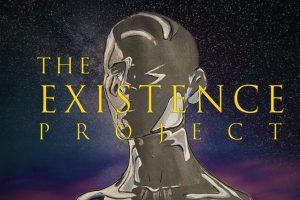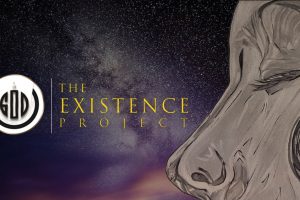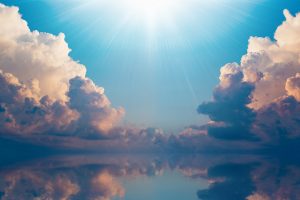Australia is an island continent, lying between the Indian and Pacific oceans. It is the world’s sixth largest country by total area, measuring above seven million square kilometers. With a population of roughly 23 million, it inhabits a multicultural and multiracial nation. In the 2011 Census, Australians reported around 300 ancestries. The most five most commonly nominated ancestries that respondents most closely identified with were English (25.9%), Australian (25.4%), Irish (7.5%), Scottish (6.4%), and Italian (3.3%).1
Christianity is by far the most predominant religion in Australia, but the country’s religious landscape has changed dramatically over the past century with the percentage of Christians dropping from 96 percent of the population in 1911 to 61 percent in 2011 according to the most recent census2 report.
The Australian Bureau of Statistics (ABS) social trends report found that the rising numbers of non-believers mirrors a steady decline in people reporting Christian beliefs, while those professing other beliefs, including, Buddhism, Islam and Hinduism were on the rise.3 Latest figures show that Buddhists (2.5%), Muslims (2.2%), Hindus (1.3%) and Judaism (0.5%) all trail to the religiously unaffiliated which make up 22 percent of the total population.

Australia’s Aboriginal people were the original inhabitants of the Australian continent, and are believed to have migrated from Asia at least 50,000 years ago. Australian Aboriginal mythology accounts for some of the earliest records of religious practice in humans. The Dreamtime refers to the sacred era of Aboriginal mythology – an animist worldview entailing complex oral traditions pertaining to Creation stories. It provided the indigenous Australians with guidance on governing laws, and rules for social behavior in their communities. The various stories had different meanings for different Aboriginal groups. Over time, history brought about multicultural immigration, thereby gradually diversifying religious trends in Australia. Aboriginal Australians only account for a mere 3% of Australia’s population of almost 23 million, and the numbers of those left still believing in the Dreamtime are furthermore far and few between.
Christianity was introduced with the arrival of the First Fleet of British convicts in 1788, whereafter Australia has remained a predominantly Christian society. As immigration continued, churches other than the Church of England arrived. Currently, the largest number of members belong to the Roman Catholic Church of Australia, the Anglican Church of Australia, and the Uniting Church in Australia. The late 18th century saw the arrival of free settlers but it was the gold rush of the 1850s led to a radical increase in immigration and each group of settlers arrived with their own religious traditions.
It was during this time that Buddhism is believed to have been first documented in Australia. Chinese miners arrived in Australia looking for job opportunities to work on the gold fields. This initial Buddhist introduction was short lived, as majority of the workers were temporary visitors, later returning to their villages in China a few years later, after having collected enough money for their family back at home. The Vietnam War (1956-1975) saw a more permanent increase in immigrants from South East Asia, naturally increasing the number of Buddhists in Australian population.
Muslims visited long before European immigration began, and are in fact the first known contacts between the indigenous people of Australia. They initially came as traders and fishermen from east Indonesian archipelago. Later, during the 19th Century, both Muslims and Hindus immigrated from British India during the non-mechanical era. They imported camels and worked on cotton and sugar plantations, and were called the ‘Afghan Cameleers’, providing a form of transportation in the vast desert area of Australia. In modern day Australia, the numbers of Muslims are steadily increasing due to civil strife in Muslim countries, and the general onset of immigration from various parts of the Middle East.

Judaism first came to Australia at the same time as Christianity, aboard, when eight transported convicts travelling on the First Fleet were reported to have been identified as Jewish. These numbers increased over the next few decades, coinciding with the growing number of convicts sent to Australia. Numbers further increased during times of anti-Semitism, such as refugees and Holocaust survivors who arrived during and after World War II. The Gold Rush also attracted a wave of Jewish immigration, outnumbering the native-born Jews at the time.
Religion in Australia has been continually evolving but the changes over the past century have been particularly striking. Census comparisons over the years suggest that with the continued decline in people reporting Christian beliefs that ‘no religion’ will eventually be the majority. Increasing secularism is not limited to Australia, but is a general global trend.
‘“Rates of reporting no religion have been steadily rising and Australia is not alone in this – rates are also rising for countries like New Zealand, England, Wales, Canada, the United States and Ireland,” said Fiona Dowsley, director of Social and Progress Reporting at ABS.’4

Australia does not have an official state religion. Whilst the Church of England originally had an advantage, the growing trend in religious equality brought the church privilege to an end. Section 116 of the Australian Constitution states:

“The Commonwealth of Australia shall not make any law establishing any religion, or for imposing any religious observance, or for prohibiting the free exercise of any religion and no religious test shall be required as a quantification for any office or public trust under the Commonwealth.”
Hazrat Mirza Tahir Ahmadrh (1928-2003) Khalifatul Masih IV, the Fourth Head of the Ahmadiyya Muslim Community, stated the following on the reason for rising secularism:
“This, in short, is the tale of the origin, rise and fall of religions. But a new beginning is always made after every fall to rehabilitate the Unity of God yet again. It always originates in Heaven, and descends with revelation. It never erupts from the earth below, rising heavenwards like curly columns of smoke of human confusion ultimately resolving into a belief in Unity. Instead the Unity of God only descends from on high to raise the fallen man yet again to the celestial heights of nearness to Him.”5

Perhaps, once this ‘smoke of human confusion’ begins to clear, spiritual enlightenment will be sought actively on an individualistic scale, whereby the chains of inherited religion or tradition will no longer interfere with the private search for truth.
References:
1. “2011 Census QuickStats: Australia.” Accessed January 22, 2014.
2. “Main Features – Cultural Diversity in Australia.” Accessed January 22, 2014. https://www.abs.gov.au/ausstats/abs@.nsf/Latestproducts/2071.0Main%20Features902012%E2%80%932013.
3. Mickelburough, Peter. “Almost Five Million Australians Says They Have No Religious Beliefs.” HeraldSun. Accessed January 22, 2014.
4. Mickelburough, Peter. “Almost Five Million Australians Says They Have No Religious Beliefs.” HeraldSun. Accessed January 22, 2014.
5. Mirza Tahir Ahmad, Revelation, Rationality, Knowledge & Truth (Surrey: Islam International Publications Limited, 1998), 216.





Add Comment